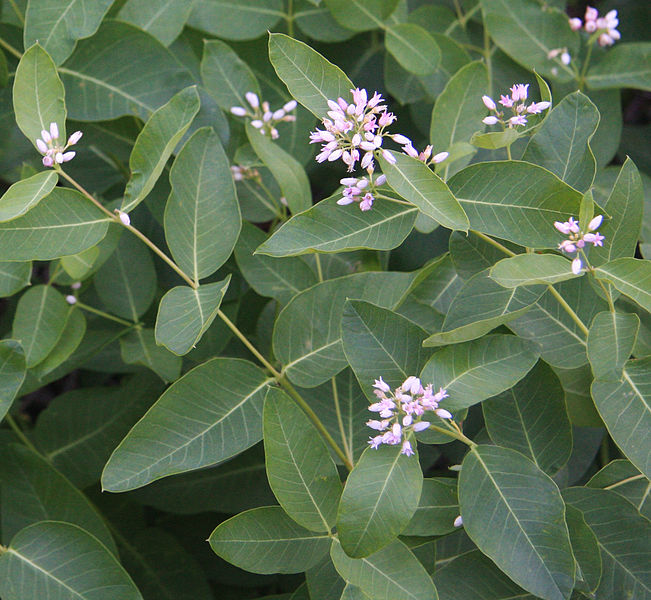Dogbane (Apocynum cannabinum) is a North American native plant found throughout the continental United States and southern Canada. It is commonly found in wooded areas along the banks of lakes and streams. Unlike most herbs, it prefers wet locations.
Native Americans used the fibers inside the stems to make string, thread, rope, baskets, snares, netting, and clothing. They harvested the stems in the fall then split them open to access the long fibers inside. The fibers were partially dried and then woven into string or thread which was then woven into cloth, cords or netting. The fibers needed to be harvested in the fall because if left in the dead stems over the winter, the fibers will disintegrate. European colonists nicknamed the plants Indian Hemp. It was also known as wild cotton.
Dogbane is related to milkweed and looks quite a bit like it but more branched. It also contains poisonous sap. Apocynum means “poisonous to dogs”. The toxins are cardiac glycosides which inhibit the heart muscle causing cardiac arrest. It is toxic to livestock. Death occurs 12 to 24 hours after ingestion by most animals. Hummingbird moths are not affect by the toxins and feed on the plants.
Despite its lethality, dogbane has been used medicinally. Tea made from the roots has been used to treat colds, earache, headache, nervousness, dizziness, worms and insanity. A wash made from the roots has been used to stimulate hair growth, treat dandruff and to get rid of head lice.
Dogbane is a perennial that is hardy in zones 4 through 9. The plants grow to six feet in height. They prefer shade and moist soil. Dogbane grows aggressively and can become invasive. Caution should be exercised when introducing it to your garden where it could crowd out other plants and take over. Flowers are usually light pink or lavender. Bloomtime is early summer. In the fall, the plants die back to the ground.
If you want to add dogbane to your garden, you can dig up the roots in the fall before the frost to transplant. Because it needs moisture, you should plant the roots immediately or if you have to wait, store them someplace cool. The roots must be kept moist and can even be stored in water. Plant your transplants one foot apart.
You can also easily grow dogbane from seed. Its seed comes in pods like its cousin the milkweed with small hairs that allow the seeds to be spread by the wind. Harvest the pods when they have ripened during August and September. You can direct sow the seeds immediately in the fall for germination in the spring.

